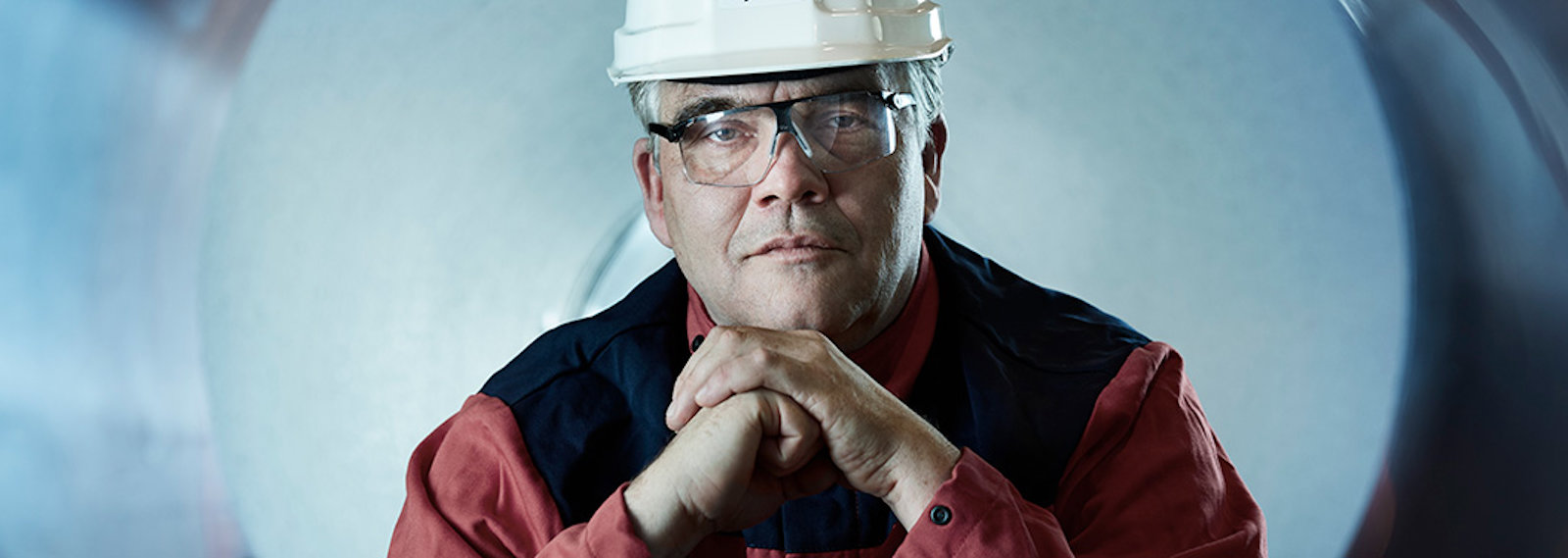With more responsibility than most Hydro colleagues
Sten Roar Martinsen keeps Hydro's CEO in line.
As employee representative on the company's board, he has greater responsibility than most of his fellow employees for ensuring that Hydro is heading in the right direction. And with 35 000 colleagues in 40 countries, he has more than enough to think about.
Neither the employee representative nor the CEO seem to have any problems understanding their roles. Cooperation is a decisive factor in the Scandinavian management model, and over the years cooperation has acquired an increasingly important role in Hydro.
A pivotal moment was in 1967 when the head of the company agreed with the trade unions to try out new ways of cooperating. These attempts at cooperation in Norway attracted the attention of companies all over the world. Indeed, Japanese companies adopted the idea of giving operators more influence.
A company culture built on innovation and cooperation
When Sten Roar Martinsen joined Hydro in Karmøy as an operator after completing his military service in 1983, he joined a corporate culture that was characterized by innovation and cooperation. Only two years later, he was elected employee representative. Since then, things have snowballed, and his appointment as employee representative is now a full-time position.
This course had not been staked out beforehand, and Sten Roar is still not quite sure how things turned out the way they did.
"At first it felt as if things happened by chance, but I enjoyed the role. I enjoy having influence, and in Hydro we employees have that. We're quite proactive, to put it that way."
In dialog with Hydro management
Back then, most of Sten Roar's colleagues were based in Norway. He clearly remembers the CEO coming to him some time in the 1990s to inform him that Hydro now had as many employees abroad as in Norway. Today, the majority lives outside Norway; there are more employees on the company payroll in Germany, the US and Brazil than in Norway.
And the role of the employee representative has changed in line with this trend. Today much of his work involves ensuring that employee representatives in other parts of the world participate in dialog with the company's management in the same way as in Norway. That is not always easy, given the wide variation in cultures and traditions. The same applies to national legislation, so local adaptations are often called for.
In some countries the law does not even allow unions, so other ways of involving the employees have to be found. In some places the relationship between unions and management is characterized by confrontation and conflict.
Arriving at the best solution
In Norway there is a broader understanding of everyone being in the same boat. Sten Roar Martinsen thinks there are a number of reasons for this, one of them being tripartite cooperation – cooperation between unions, employers and government – which took on novel and constructive forms in the 1990s.
"When we arrive at the best solutions, we in the unions have often had a hand on the wheel. And occasionally a foot on the brake when management sets off on a solo trip."
We are aluminium.
